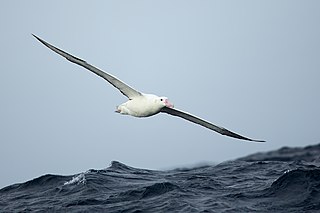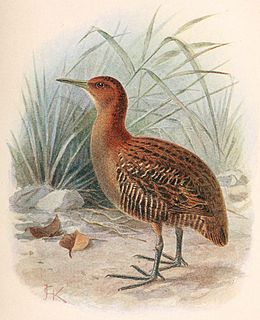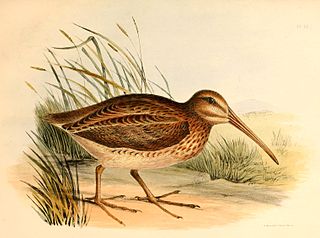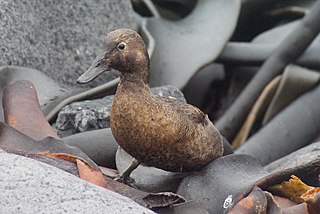 W
WThe Antipodean albatross is a large seabird in the albatross family. Antipodean albatrosses are smaller than wandering albatrosses, and breed in predominantly brown plumage, but are otherwise difficult to distinguish from young wanderers.
 W
WThe white-capped albatross is a mollymawk that breeds on the islands off of New Zealand. Not all experts agree that this form should be recognized as a separate species from the shy albatross, Thalassarche cauta. It is a medium-sized black, slate gray, and white albatross and is the largest of the mollymawks.
 W
WThe yellow-eyed penguin, known also as hoiho or tarakaka, is a species of penguin endemic to New Zealand.
 W
WThe Auckland Islands shore plover, also called Ross's plover, is a small extinct plover known only from a single specimen, apparently collected in the Auckland Islands in 1840 by the crew of HMS Erebus, and now in the collection of the British Natural History Museum. Its status as a species distinct from the shore plover was uncertain for many years. Charles Fleming speculated about whether the lone specimen represented an unknown intermediate plumage, a melanistic mutant, or a separate species. The consensus today, however, is that it is an immature Thinornis novaeseelandiae with an incorrectly-recorded location.
 W
WThe Auckland rail is a small nearly flightless rail endemic to the Auckland Islands 460 km south of New Zealand. It is somewhat of a biogeographical anomaly, being the only species in the genus Lewinia to have reached the islands of New Zealand, skipping over the main islands to reach the remote Auckland group. Its closest relative is Lewin's rail of Australia. The species is currently restricted to two islands in the Auckland group, Adams Island and Disappointment Island.
 W
WThe Auckland shag or Auckland Islands shag is a species of cormorant from New Zealand. The species is endemic to the Auckland Islands archipelago. It is a sedentary bird that primarily eats various crustaceans and fish. In recent years, roughly 1,000 pairs have been recorded. The Auckland shag is a colonial nester, building sizeable nests of, among other items, grass, twigs and seaweed. The Auckland shag lays three pale blue-green eggs in November–February. The incubation period is 26–32 days.
 W
WThe Auckland Island snipe is a small bird in the sandpiper family. It is the isolated nominate subspecies of the subantarctic snipe that is endemic to the Auckland Islands, a subantarctic island group south of New Zealand in the Southern Ocean.
 W
WThe Auckland teal or Auckland Islands teal is a species of dabbling duck of the genus Anas that is endemic to Auckland Islands south of New Zealand. The species was once found throughout the Auckland Islands but is now restricted to the islands that lack introduced predators: Adams Island, Enderby Island, Disappointment Island and a few smaller islands. An old report of "the same flightless duck" on North East Island, The Snares group most likely refers to a straggler.